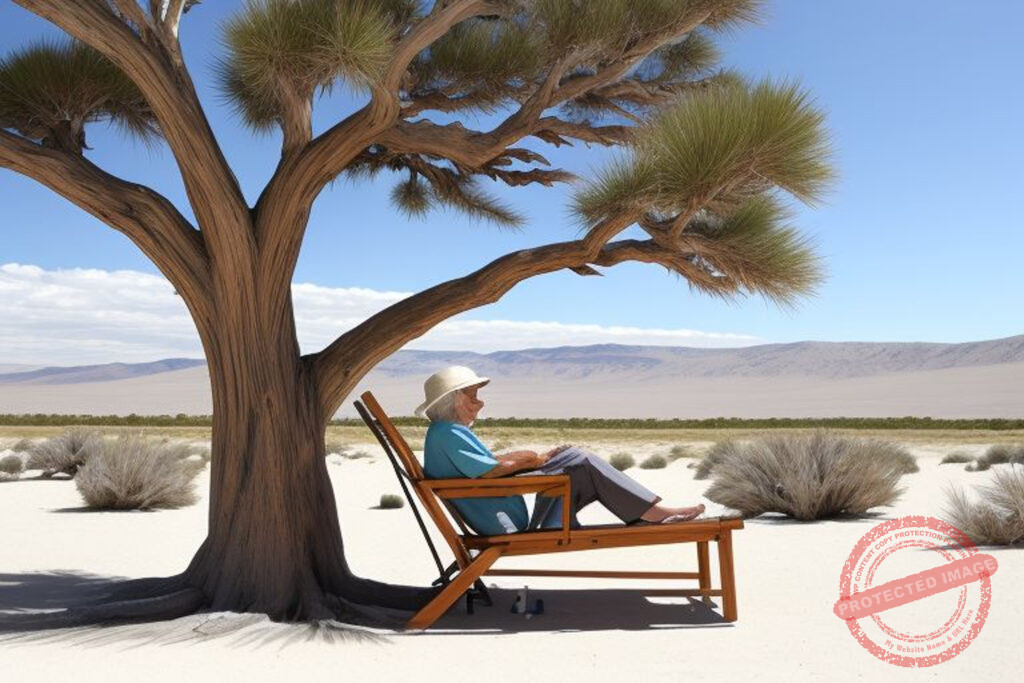
In a world where the passage of time is both constant and remarkable, there exist extraordinary individuals and natural wonders that stand as living testaments to the enduring essence of life. Today’s blog post celebrates the remarkable longevity of the oldest people, places and things, whose existence serves as a beacon of wisdom and resilience.
The Oldest People
Jeanne Louise Calment
Jeanne Louise Calment, born on February 21, 1875, in Arles, France, holds the record for the longest confirmed human lifespan. Married to her cousin Fernand Calment in 1896, she outlived him and their only child, Yvonne, who passed away in 1934. Jeanne gained global recognition in 1988 when she was officially acknowledged by the Guinness World Records as the world’s oldest living person, a title she retained until her death.
Attributes of a Long Life Well Lived
Known for her humor and wit, she attributed her longevity to a diet rich in fruits, olive oil, and port wine, continuing to ride her bicycle until the age of 100. Celebrating her 100th birthday in 1975, each subsequent year became a new milestone, culminating in her passing on August 4, 1997, at the remarkable age of 122 years and 164 days.
Calment remained active well into her centenarian years. She took up fencing at the age of 85, and she only moved to a nursing home at 110, where she continued to live independently in her own apartment. In addition to her dietary choices, Calment’s lifestyle included daily breathing exercises. She was also an advocate of laughter, claiming that it contributed to her well-being. Her remarkable age made her a celebrity, and she enjoyed the attention. She received letters and gifts from well-wishers worldwide, and her life was documented in the media. She even released a CD at the age of 121, featuring her reminiscing about her life and experiences.
After her death, her apartment became a museum in Arles, showcasing artifacts from her life. The town also inaugurated a foundation in her name, the “Fondation Jeanne Calment,” to promote scientific research on aging.
Sarah Knauss
Sarah Knauss, born on September 24, 1880, in Hollywood, Pennsylvania, holds a significant place in American longevity history. She gained widespread recognition as the oldest living American before her passing on December 30, 1999, at the age of 119 years and 97 days. Knauss lived through a remarkable span of historical events, witnessing the turn of two centuries. Throughout her life, she experienced the advent of the automobile, two World Wars, the space age, and numerous other transformative moments in American history.
Her longevity was attributed to a combination of factors, including a healthy lifestyle and a supportive social environment. Sarah Knauss married Abraham Lincoln Knauss, and together they had two daughters, Kathryn and Clara. Sarah outlived her husband and both of her daughters. Her daughter Clara passed away in 1926, and her husband Abraham died in 1965.
The Oldest American Presidents
George H. W. Bush lived to be 94 years old. Ronald Reagan lived to be 93. And Jimmy Carter is currently 99 years old. It seems that being the American president is good for your health!
The Oldest Person in the Bible
In the Bible, Methuselah is often considered the longest-lived person. According to the Book of Genesis (Genesis 5:27), Methuselah lived for 969 years. He is mentioned as the son of Enoch, the grandfather of Noah, and is known for having the longest recorded lifespan in the Bible. The specific reason for Methuselah’s exceptional longevity is not explicitly mentioned in the biblical text, and interpretations may vary.
The Oldest Places
Next in our examination of the oldest people, places and things are the oldest civilizations. These cultures hold reverence, highlighting the fact that humans have been living together in society for thousands of years.
Sumerian Civilization
The oldest civilization known to humanity is generally considered to be the Sumerian civilization, which emerged in the region of ancient Mesopotamia (modern-day Iraq) around 4500 BCE. The Sumerians developed one of the earliest forms of writing known as cuneiform, as well as significant advancements in agriculture, urban planning, and governance. Mesopotamia, often referred to as the “cradle of civilization,” witnessed the rise of other early civilizations such as the Akkadian, Babylonian, and Assyrian civilizations.
While Sumeria is often regarded as the oldest, the concept of civilization is complex, and different regions around the world saw the development of advanced societies around the same time, such as the ancient Egyptians and the Indus Valley Civilization.
Ancient Egyptians
The ancient Egyptians, whose civilization flourished along the fertile banks of the Nile River for over three millennia, left an indelible mark on human history. Renowned for their remarkable achievements in various fields, the Egyptians were pioneers in architecture, engineering, medicine, art, and religion. The majestic pyramids of Giza, an enduring symbol of their architectural prowess, stand as testaments to their advanced knowledge of mathematics and construction.
The Egyptians developed a sophisticated system of writing known as hieroglyphics, allowing them to record their rich history and complex religious beliefs on papyrus scrolls. Guided by a deep reverence for the afterlife, they meticulously crafted elaborate burial practices, such as the construction of grandiose tombs and the intricate process of mummification. Their pantheon of gods and goddesses reflected a complex spiritual worldview, and the pharaohs, believed to be earthly manifestations of divine authority, governed with both secular and religious authority. The ancient Egyptians’ enduring legacy lies not only in their monumental structures but also in their cultural and intellectual contributions that continue to captivate and inspire the world.
Indus Valley Civilization
The Indus Valley Civilization, also known as the Harappan Civilization, emerged around 3300 BCE in the vast plains of the Indus River basin, encompassing present-day India and Pakistan. Renowned as one of the world’s earliest urban cultures, the Indus Valley Civilization thrived for nearly a millennium, displaying an impressive level of sophistication in city planning, architecture, and trade. Its major urban centers, including Mohenjo-Daro and Harappa, featured advanced drainage systems, grid-like street layouts, and multistory brick structures, suggesting a high degree of civic organization and engineering prowess.
The inhabitants engaged in agriculture, domesticated animals, and established a complex trade network that extended as far as Mesopotamia. Despite its remarkable achievements, deciphering the Indus Valley script remains a challenge, leaving much of the civilization’s social and cultural aspects shrouded in mystery. The decline of the Indus Valley Civilization around 1900 BCE has sparked scholarly debate, with environmental factors and shifts in river courses among the proposed explanations for its eventual demise. Nonetheless, the Indus Valley Civilization stands as a testament to the ancient world’s ingenuity and urban sophistication.
The Oldest Living Things
In our exploration of the oldest people, places and things we now come to ancient living non-humans. They are truly a wonder of richness, resilience, and awe.
Methuselah The Tree
The oldest individual trees on Earth are typically ancient bristlecone pines (Pinus longaeva) found in the White Mountains of California, USA. One of the most famous ancient bristlecone pines is named Methuselah. Methuselah is estimated to be over 4,800 years old, making it one of the oldest known living trees on the planet. Exact locations and identities of these ancient trees are often kept confidential to protect them from potential harm. Bristlecone pines, in general, are known for their ability to withstand harsh environmental conditions and extreme climates, allowing them to live for thousands of years.
Other Old Living Things
Several living things are known for their remarkable longevity, beyond the Methuselah tree. Here are a few examples:
Pando (Quaking Aspen Colony): Often considered one of the oldest and heaviest living organisms on Earth, Pando is a clonal colony of quaking aspen trees in Utah. The individual trees share the same root system, and estimates suggest Pando could be thousands of years old.
Llangernyw Yew: This ancient yew tree, located in the churchyard of St. Dygain’s Church in Llangernyw, Wales, is estimated to be over 4,000 years old. Yews are known for their longevity, and some individuals can survive for millennia.
Turritopsis dohrnii (Immortal Jellyfish): While not ancient in terms of years, this species of jellyfish is fascinating for its ability to revert its cells back to their earliest form and start its life cycle anew. This process allows it to potentially live indefinitely under the right conditions.
Bowhead Whale: These massive whales, found in Arctic and subarctic waters, are known for their impressive lifespans. Some individuals have been estimated to be over 200 years old, making them one of the longest-lived mammals.
Giant Tortoises: Various species of giant tortoises, such as the Galápagos tortoise and the Aldabra giant tortoise, are known for their remarkable lifespans. Some individuals have lived well over 100 years.
Oldest People, Places and Things
In exploring the tales of the world’s oldest people, places, and things, we embark on a journey that transcends the boundaries of time itself. From the enduring wisdom embodied by the oldest individuals to the architectural marvels of ancient civilizations and the timeless vitality of Earth’s oldest living organisms, we are reminded of the profound interconnectedness between humanity and the natural world.
These representatives of resilience, longevity, and adaptation offer glimpses into the extraordinary tapestry of existence that has unfolded over millennia. As we think about the Methuselah tree’s silent witness to the passage of centuries and the resilient spirit of the world’s oldest citizens, we are encouraged to reflect on our own place within the grand continuum of history. These stories beckon us to appreciate the beauty of endurance, the wisdom in ancient whispers, and the enduring legacy of those who have come before us. In celebrating the oldest people, places and things among us, we are prompted to embrace the richness of our shared heritage and the boundless possibilities that lie ahead.
Next Steps
If you have any inclination to live to be 120, try acupuncture to keep your Qi and Blood flowing. The biggest problem faced by the elderly from a Chinese medicine perspective is blood stagnation. Acupuncture moves the Qi, which keeps the blood circulating well throughout the body. It also boosts Kidney function, which is another source of vibrancy in our senior years.
BOOK NOW to schedule an appointment online.
Meet the Practitioners (Video).
Learn about all the conditions we treat.
Focus Key Phrase: Oldest People, Places and Things
Image from perchance.org




